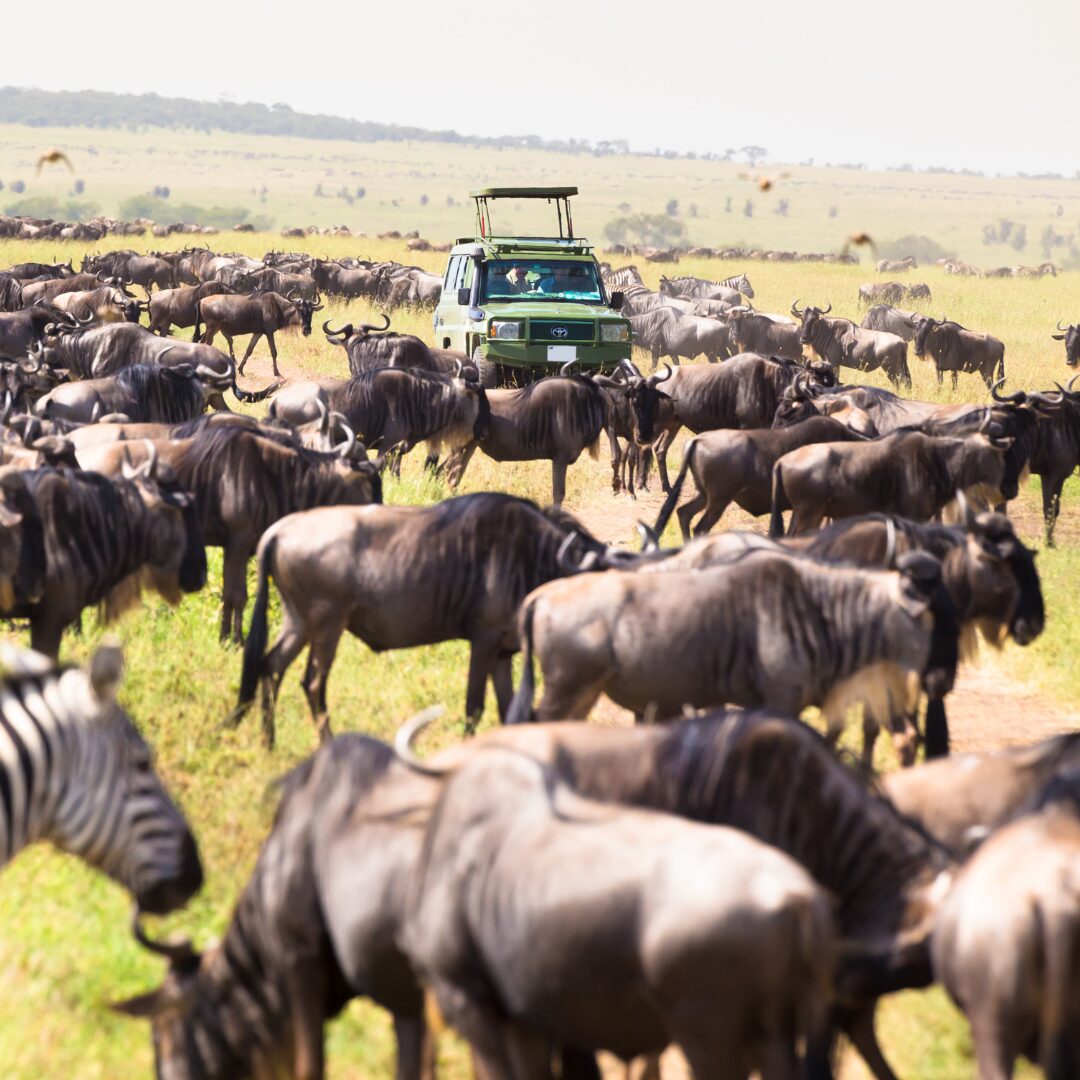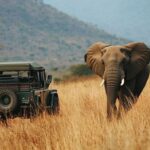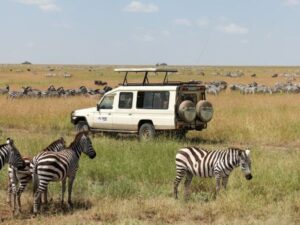 Southern Africa offers one of the world’s richest safari experiences. Covering countries like South Africa, Botswana, Namibia, Zimbabwe, and Zambia, the region is home to stunning wildlife, varied landscapes, and diverse safari adventures. But knowing when to go can make a big difference to your experience. Each season brings unique opportunities for animal sightings and landscape views. This guide breaks down the seasons so you can plan your ideal safari trip.
Southern Africa offers one of the world’s richest safari experiences. Covering countries like South Africa, Botswana, Namibia, Zimbabwe, and Zambia, the region is home to stunning wildlife, varied landscapes, and diverse safari adventures. But knowing when to go can make a big difference to your experience. Each season brings unique opportunities for animal sightings and landscape views. This guide breaks down the seasons so you can plan your ideal safari trip.
1. Understanding the Seasons
Southern Africa’s climate varies widely across regions, but in general, it experiences a dry and a wet season:
- Dry Season (Winter): Typically runs from May to October. During this time, temperatures are cooler, and rainfall is low.
- Wet Season (Summer): Generally from November to April, with hotter temperatures and significant rainfall.
Knowing these seasons is key to timing your safari, as animal behavior, vegetation density, and even the quality of roads and water levels change dramatically between seasons.
2. Best time to go in Southern Africa safari During the Dry Season (May to October)
The dry season is popular for safaris across southern Africa, as it often brings the best game-viewing opportunities. Here’s why:
Clear Sightings at Waterholes

During the dry season, water sources become scarce, and animals gather around remaining waterholes. This makes it easier for safari-goers to spot large groups of animals, including elephants, zebras, and various antelope species. Predators like lions and leopards also tend to hang around water sources, increasing the chances of seeing the “Big Five.
Less Vegetation, Better Visibility
The dry season means less vegetation, which allows for clearer views. The bush thins out, giving safari-goers an unobstructed view of the animals, especially in places like Botswana’s Okavango Delta and Zimbabwe’s Hwange National Park.
Cooler Temperatures and Comfortable Safari Conditions
Temperatures are cooler and less humid during the dry season, which makes outdoor activities more comfortable, especially during early morning and late afternoon game drives. In regions like Namibia’s Etosha National Park, temperatures drop significantly in the winter, making it a great time for safaris in the arid areas.
3. Southern Africa Safaris During the Wet Season (November to April)
The wet season, or “green season,” has its own appeal, especially for travelers who want to experience lush landscapes and newborn wildlife. Here’s what you can expect during this period:
Stunning Green Landscapes
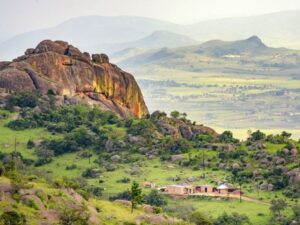
Rain transforms southern Africa into a green paradise. The landscape becomes lush and vibrant, with an abundance of blooming wildflowers and green grasses. This season is especially beautiful for photographers looking to capture the landscape as well as wildlife.
Birdwatching and Migratory Species
The wet season is a fantastic time for birdwatching. Migratory birds arrive, adding colorful and diverse birdlife to the region. Botswana, in particular, becomes a birdwatcher’s dream as the Okavango Delta fills with water and attracts numerous bird species.
Baby Animals and Predatory Action
The wet season is also when many animals give birth, providing the unique opportunity to see young antelopes, elephants, and zebras. With new offspring around, predators like lions and hyenas are more active, offering thrilling predator-prey interactions.
Fewer Crowds, Lower Rates
The wet season generally sees fewer tourists, which means less crowded parks and often lower prices for lodges and tours. This quieter atmosphere allows for a more private safari experience, and travelers can enjoy wildlife sightings without the high traffic.
4. Safari Highlights by Month: best time to go in Southern Africa safari
May to June: Early Dry Season
These months mark the start of the dry season, with temperatures still relatively mild. Animals begin to gather near water sources, making game viewing easier. This is a good time for safaris in South Africa’s Kruger National Park or Botswana’s Chobe National Park, where animal sightings are already plentiful.
July to September: Peak Dry Season
These are the prime months for safaris in southern Africa. Water is scarce, so animals cluster around waterholes. The temperatures are also cool, making game drives more enjoyable. The Okavango Delta in Botswana is particularly stunning at this time, as it reaches its peak flood season, attracting large concentrations of wildlife.
October: Transition to the Wet Season
October is a transitional month with rising temperatures and occasional rain. Animal sightings remain good, but temperatures can get quite hot, especially in places like Zimbabwe’s Hwange National Park. It’s a great time for game viewing, although you’ll need to be prepared for the heat.
November to December: Early Wet Season
Rainfall increases in November, transforming the dry landscapes into lush, green fields. Migratory birds start arriving, and baby animals are born, making it an exciting time for photographers and birdwatchers. South Africa’s Eastern Cape, including Addo Elephant Park, is a wonderful area to visit during this time.
January to April: Peak Wet Season
These months experience the heaviest rains, which can affect travel conditions. However, this is the best time for birdwatching, and the lush landscape is mesmerizing. Some parks, like Zambia’s South Luangwa, are known for their “emerald season” safaris, offering stunning river views and abundant wildlife.
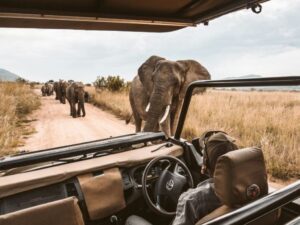 5. Choosing the Right Safari Destination in Southern Africa
5. Choosing the Right Safari Destination in Southern Africa
Different regions in southern Africa have their peak times depending on the landscape and specific wildlife offerings. Here are some key destinations and their best seasons:
South Africa (Kruger National Park)
The dry season from May to September is the best time to visit Kruger, as the vegetation thins and animals are easier to spot. During the wet season, the park becomes lush and green, which is great for scenery and birdwatching but may make wildlife viewing more challenging.
Botswana (Okavango Delta)
The Okavango Delta offers spectacular safari experiences, especially from June to September when the delta floods and wildlife gathers around water sources. The dry season makes it easier to navigate and offers prime game-viewing opportunities.
Namibia (Etosha National Park)
Namibia’s Etosha National Park is best visited in the dry season from May to October. The park’s waterholes provide consistent viewing spots as animals congregate in the arid landscape. In the wet season, wildlife disperses, but birdwatching opportunities are exceptional.
Zimbabwe (Hwange National Park)
Hwange is fantastic for game viewing during the dry season, from June to October. The wet season brings newborn animals and beautiful green landscapes but can make wildlife viewing more challenging as animals spread out.
6. Special Tips: best time to go in Southern Africa safari
- Book Accommodations Early for Peak Seasons: During the dry season, safari lodges and camps can fill up quickly, so book well in advance.
- Bring Proper Clothing: Temperatures can vary widely, so pack layers. A good mix of warm clothes for early mornings and lightweight gear for daytime is essential.
- Consider Guided Tours: A guided tour can enhance the experience with insights into the animals, ecosystems, and conservation efforts unique to each region.
- Use a Quality Camera and Binoculars: Wildlife viewing is enhanced with a good pair of binoculars and a quality camera, especially for birdwatching in the wet season.
Conclusion
The best time for a safari in southern Africa depends on your personal interests and the type of experience you want. For incredible game-viewing and easier wildlife sightings, the dry season from May to October is ideal. If you’re interested in lush landscapes, birdwatching, or quieter, more budget-friendly safaris, the wet season offers a unique and rewarding experience.
Whether you’re drawn to the peak migration in the Okavango Delta or the quiet beauty of Namibia’s desert landscape, southern Africa has something for everyone. With proper planning, a safari in this region promises an unforgettable adventure filled with extraordinary landscapes and wildlife encounters.

